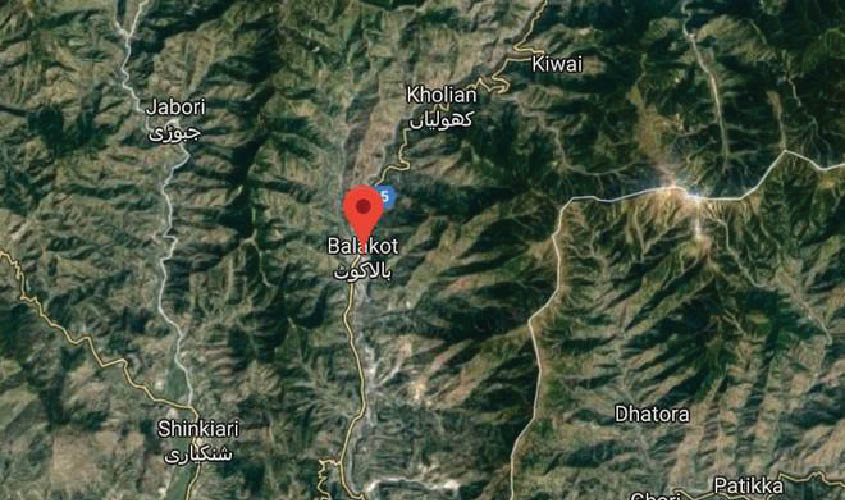New Delhi: On the morning of 26 February, hours after the Indian Air Force (IAF) carried out its precision airstrike on the Balakot terrorist training camp of the Jaish e Mohammed in Pakistan, Jaish operatives were discussing the death of one of their senior leaders in the airstrike, without disclosing his name. This was disclosed to The Sunday Guardian by some Pakistan based sources.
Source said that unlike Jaish’s usual practice of recognising the death of its cadre, this time it has decided not to do so, as that will give India and the world irrefutable proof that Masood Azhar was running a massive, advanced terrorist training camp in Pakistan.
Officers who were involved in selecting Balakot as the camp for the precision airstrike had many reasons to choose it over Bahwalpur where Jaish chief Masood Azhar generally resides. The Balakot camp was one of the most important training facilities of Azhar’s terrorist organisation. It was used to impart advanced battle training to the Jaish cadre, similar to training that had helped them attack the Sunjwan Army camp in February 2018 and the Pathankot airbase in January 2016.
Sources also said that the Pak army, which provides shelter to Masood Azhar, asked him not to accept that he had lost his cadre in the airstrike. Most of his recruits were runaways from extremely poor families, who lost touch with their family members. So their families are likely to stay in the dark the fate of their children.
The Balakot camp, located in Mansehra district of Pakistan’s Khyber Pakhtunkhwa region, was also used by the recruits of Hizbul Mujahideen in the late 1990s and early 2000s. Because of its proximity to the 166 km long Kunar river, it was at this camp that the Jaish recruits were undergoing aquatic training. Intelligence officials say this would have culminated in another 26/11-type attack.
Sources said that information collected from the ground in Balakot town, which was destroyed in the 2005 earthquake, before being rebuilt by assistance from Saudi Arabia, had shown that the terror recruits, were undergoing the Daura-e-Khash training in batches. Daura-e-Khash is the last and the most difficult stage of Jaish’s terror training exercise and goes on for three months. In this period, recruits are trained to use specialised assault rifles, learn GPS mapping, taught to raid, conduct ambushes and rig IED explosives. They are also taught how to survive at least for two days without food and water while carrying out attacks.
Once this exercise were to be completed, the recruits, mostly in groups of not more than six-eight persons were to be sent to India to carry out terror attacks. Officials say that some of them could have also used the sea route, thus probably targeting Maharashtra and Gujarat.
The agencies have gathered irrefutable evidence that ex Pakistan army personnel were regularly visiting the Balakot camp and training the recruits, including teaching them advanced tactical warfare and use of new tools.
Sources said that the camp, pseudo named as “Madrasa Ayesha Sadiq”, was situated inside a dense forest on the right side of River Kunar, and was spread over 6 acres. It had six buildings and the capacity to house around 500-600 recruits and trainers. The night on which the airstrike was carried out, sources said, the campus had around 200 Jaish cadre. With the entire area being reduced to rubble, the chances of any one of them surviving the attack is remote.
Once the recruits got their training, they would have infiltrated into India from Balakot through four different land routes before reaching Kupwara district of Jammu and Kashmir in India. These routes are:
- Balakot, Kel, Sonpindi, Muri, Dudhniyal (all in Pakistan and in PoK), and then Kainthawali forest, Bansawali Beihk, Shalabathu forest, Gugal dara, Awaoora forest, Halmatpora forest, Gulgam, Batargam, Gushi and Magam forest, in Kupwara district.
- Balakot, Kel, Sonpindi, Muri, Dudhniyal (all in Pakistan and in PoK), and then Thanda Pani, Juma Gund, Nar, Puthaa Khan Gali, Marhama forest, Dolipoora, Kunan Poshpora, Didikoot, in Kupwara district.
- Balakot, Kel (both in Pakistan and in PoK), and then Thandapani forest, Molang, Sundarmali, Gujardori, Kharban Beihk, Warsun Kachama forest and Kralpora, in Kupwara district.
- Balakot, Kel, Sonpindi, Muri, Dudhniyal, Lunda (all in Pakistan and in PoK) and then Rangsar, Kalaban forest, Rangbala Nar, Jhakanaka, Gurdaji, Gagal and Lolab in Kupwara district.

